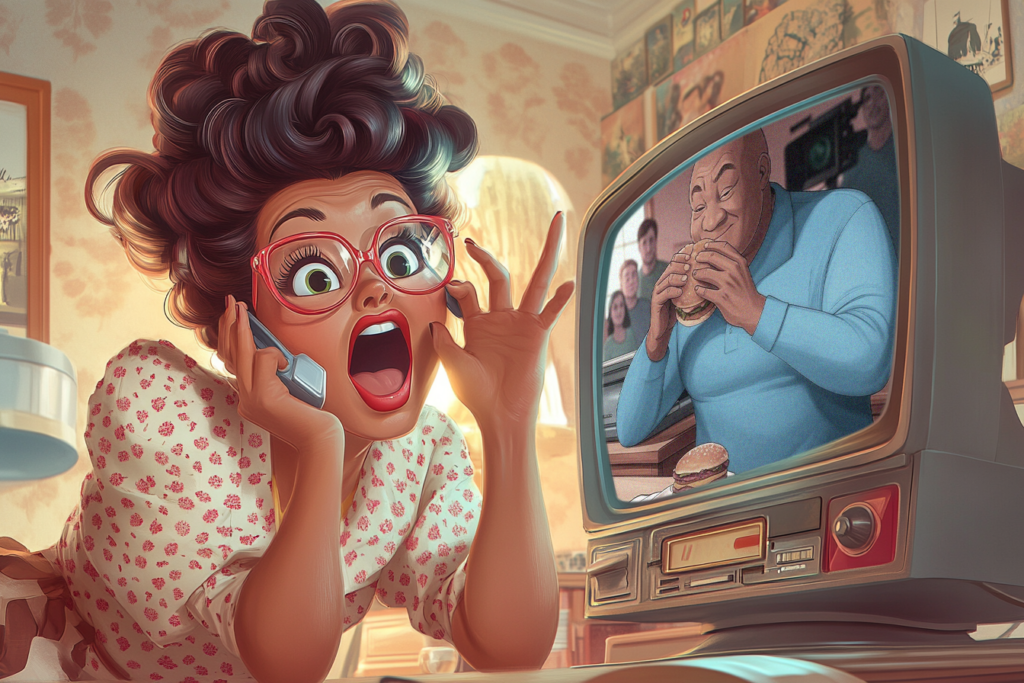
Yesterday I learned that George Foreman had passed away at age 76. The former Olympic gold medalist and two-time world heavyweight champ left a mark not only on the boxing world, but on the product world as well.
I just finished reading Rick Cesari‘s great new book, The Wellness Business Blueprint, which tells a fascinating story about Rick’s work with the “Punching Preacher.”
The George Foreman Grill — that iconic countertop appliance that’s sold over 100 million units — was NOT originally created for the boxing champ at all.
It wasn’t even designed for burgers.
The product started life as the “Fajita Express,” created by Michael Boehm and Robert Johnson for a Taiwanese appliance company. The initial concept? A taxicab-yellow device that could cook ground meat and slide it directly into taco shells positioned at the foot of the grill.
When Salton, Inc. acquired it, they renamed it the “Lean Mean Fat Reducing Grilling Machine” (inspired by the prison football team in the 1974 version of “The Longest Yard“) and showcased the grill at a 1994 trade show.
And NOBODY wanted the damn thing.
Even after signing George Foreman and rebranding it, the product initially flopped so badly that after the 1995 holiday season, major retailers wanted to return their entire inventory.
It looked like the product was an unqualified failure in its second life as well.
Then came the weird pivot that changed everything.
Salton enlarged the grilling surface to fit four burgers instead of two.
And during a QVC appearance, Foreman did something completely unplanned — on live TV, he got hungry and chomped into a burger he had just cooked.
In the next three minutes, the QVC phones “went red.”
They sold around 40,000 grills from that ONE BITE.
This is what I call in I Need That the “demonstration flip” — when seeing a product in action instantly transforms it from interesting to necessary. That single moment of authentic endorsement did what millions in advertising couldn’t.
George could talk about the grill all day long, and it was marketing speak. But when he clearly couldn’t resist going off-script and tearing into one, people instinctively KNEW they were seeing something good.
Sales skyrocketed from $5 million in 1996 to a staggering $300 million by 2000.
Product Payoff: The George Foreman Grill‘s trajectory shows how a product can fail repeatedly before finding its perfect positioning. After multiple false starts, the magic combination of celebrity endorsement, product improvements, and authentic demonstration transformed a rejected fajita maker into a lasting cultural phenomenon. Foreman’s monthly royalty checks reportedly reached $4-8 million before Salton bought his naming rights for $137 million in 1999 — all for a product retailers initially refused to stock.
Action for today: Consider your product demonstrations. Are they showcasing functional features, or are they creating emotional, “I need that” moments? The difference is crucial. Create a short list of 3-5 ways your product could be demonstrated more viscerally and authentically — focusing not on specs but on the transformative experience it delivers.
Want to explore how to create your own “demonstration flip” moment? Tap that little reply arrow and let’s discuss how to transform your product demonstrations from explanatory to compulsively desirable. Or reach out to my team of product marketing experts at Graphos Product.
